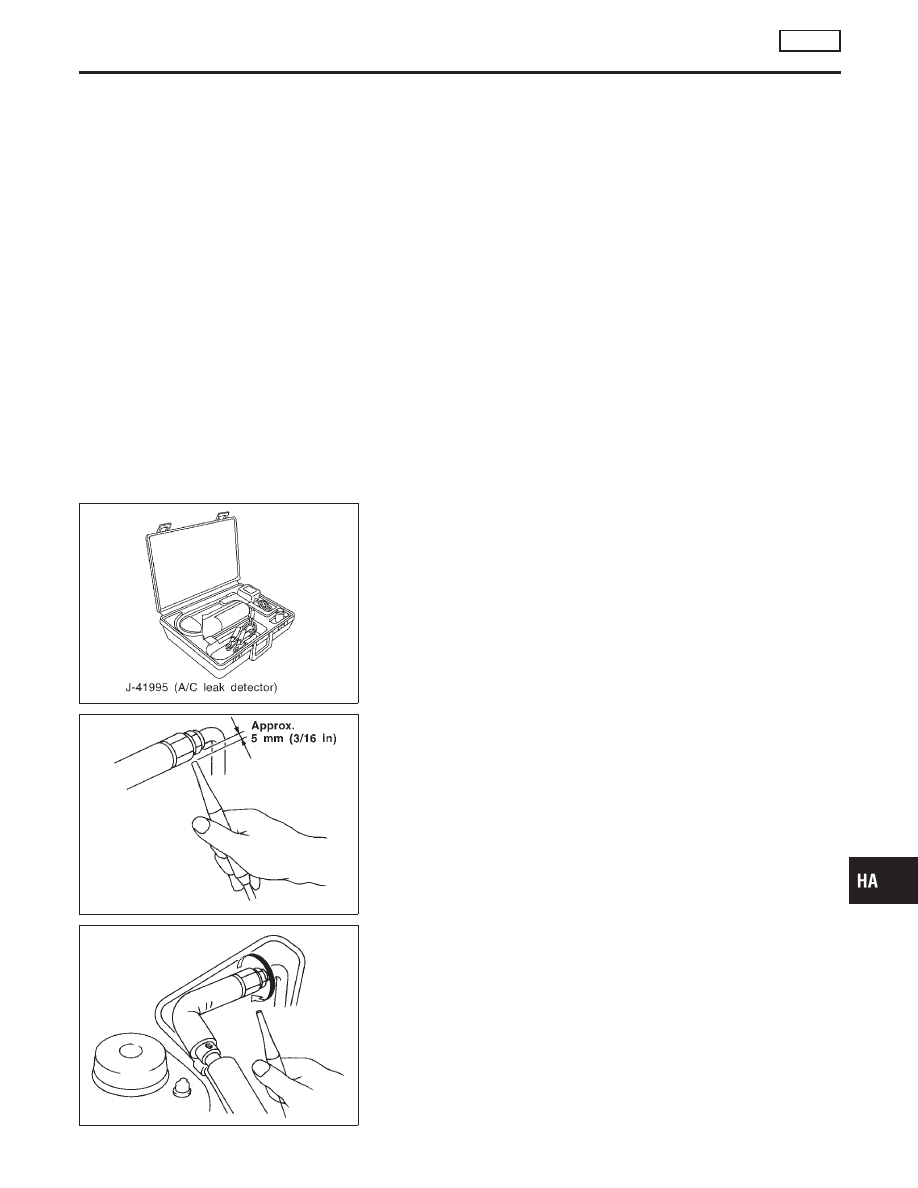Infiniti G20 (P11). Manual - part 447

5.
With the A/C operating (compressor running), inject one bottle
(1/4 ounce/7.4 cc) of fluorescent dye through the low-pressure
service valve using dye injector tool J-41459 (refer to the
manufacture’s operating instructions).
6.
With the engine still running, disconnect the injector tool from
the service fitting.
CAUTION:
Be careful not to allow dye to spray or drip when disconnect-
ing the injector from the system.
NOTE:
If repairing the A/C system or replacing a component, pour the dye
directly into the open system connection and proceed with the ser-
vice procedures.
7.
Operate the A/C system for a minimum of 20 minutes to mix
the dye with the system oil. Depending on the leak size, oper-
ating conditions and location of the leak, it may take from min-
utes to days for the dye to penetrate a leak and become visible.
SHA196FA
ELECTRONIC REFRIGERANT LEAK DETECTOR
NCHA0205
Precautions for Handling Leak Detector
NCHA0205S01
When performing a refrigerant leak check, use a J-41995 A/C leak
detector or equivalent. Ensure that the instrument is calibrated and
set properly per the operating instructions.
The leak detector is a delicate device. In order to use the leak
detector properly, read the operating instructions and perform any
specified maintenance.
SHA707EA
1.
Position probe approximately 5 mm (3/16 in) away from point
to be checked.
SHA706E
2.
When testing, circle each fitting completely with probe.
GI
MA
EM
LC
EC
FE
CL
MT
AT
AX
SU
BR
ST
RS
BT
SC
EL
IDX
SERVICE PROCEDURE
AUTO
Refrigerant Lines (Cont’d)
HA-119